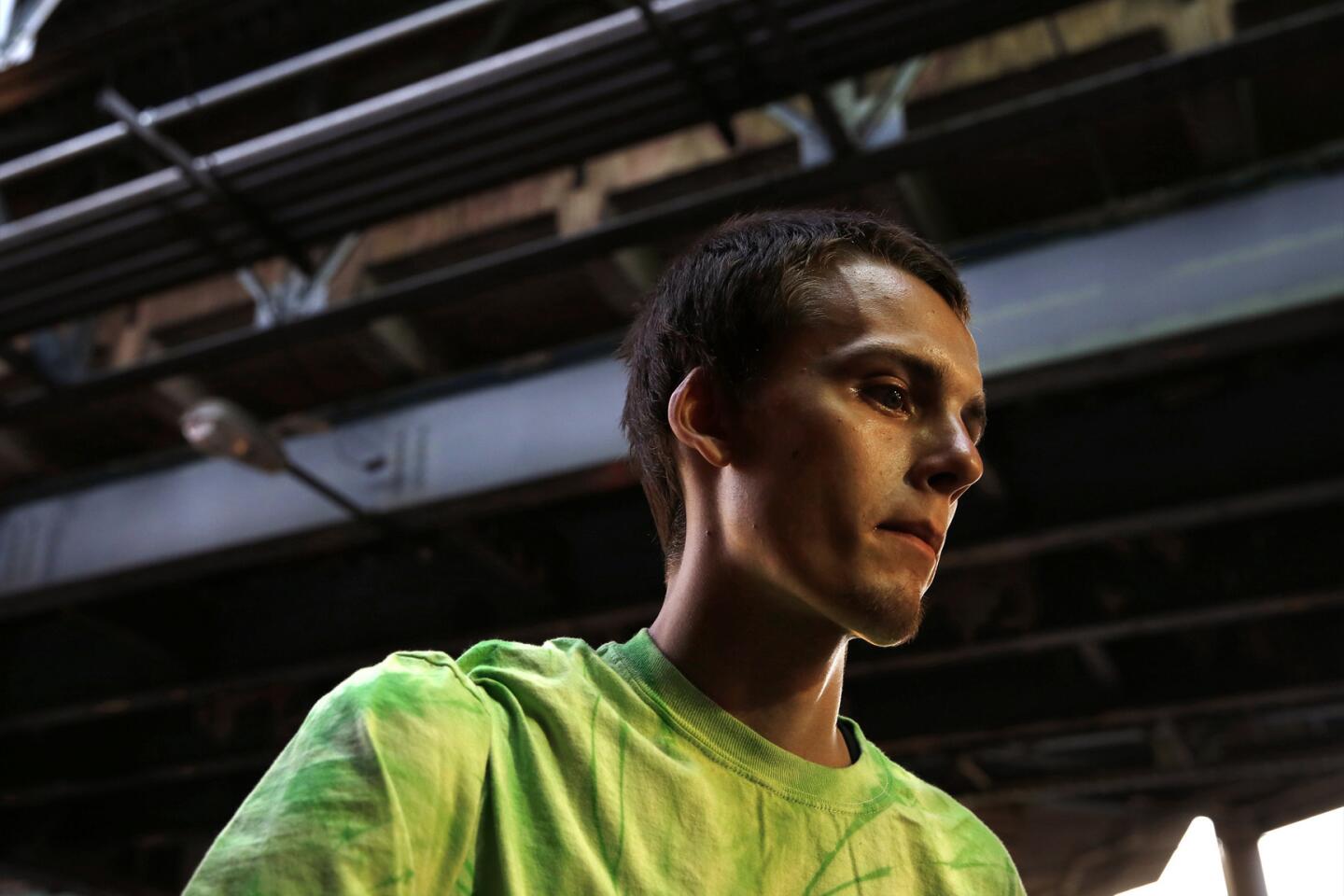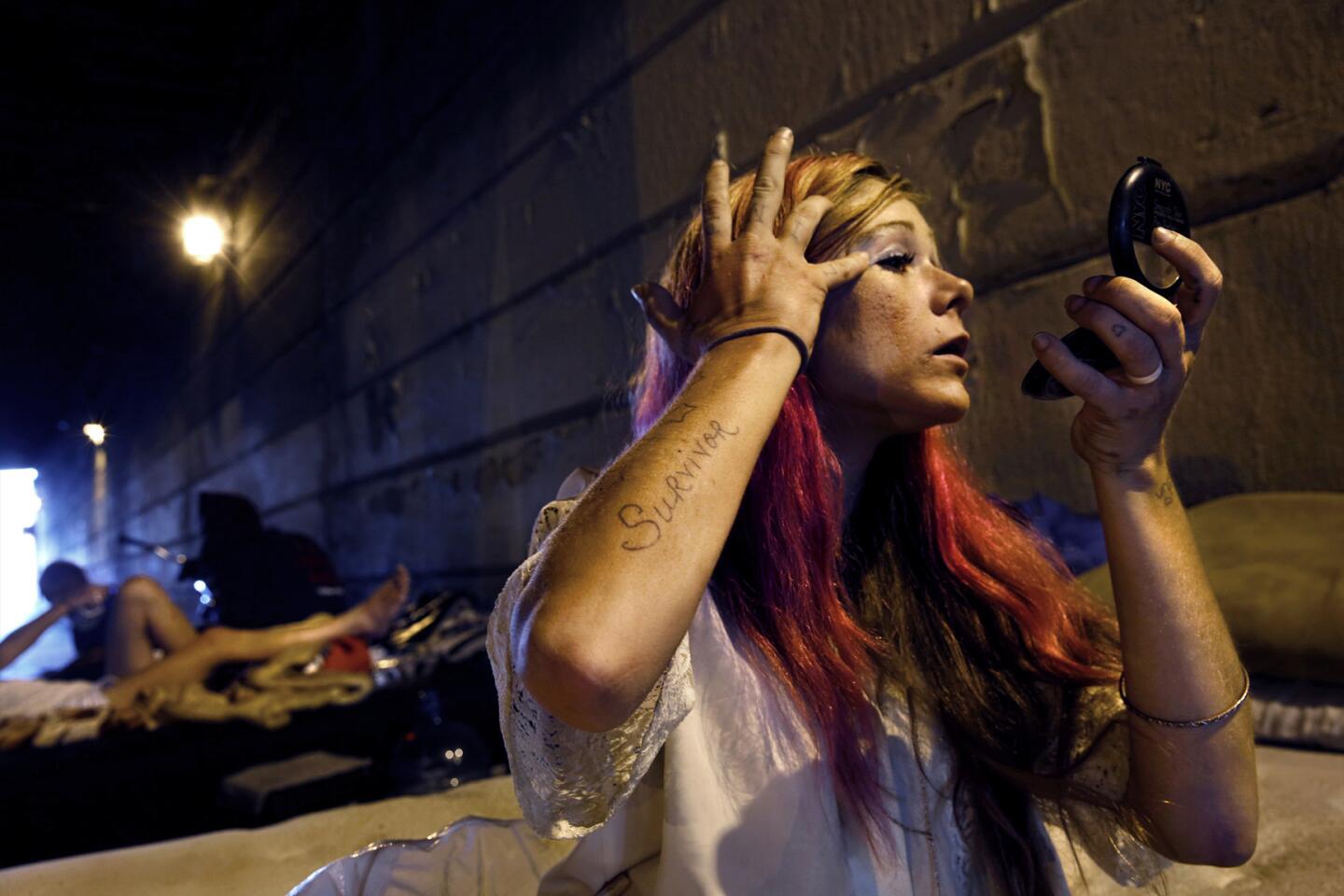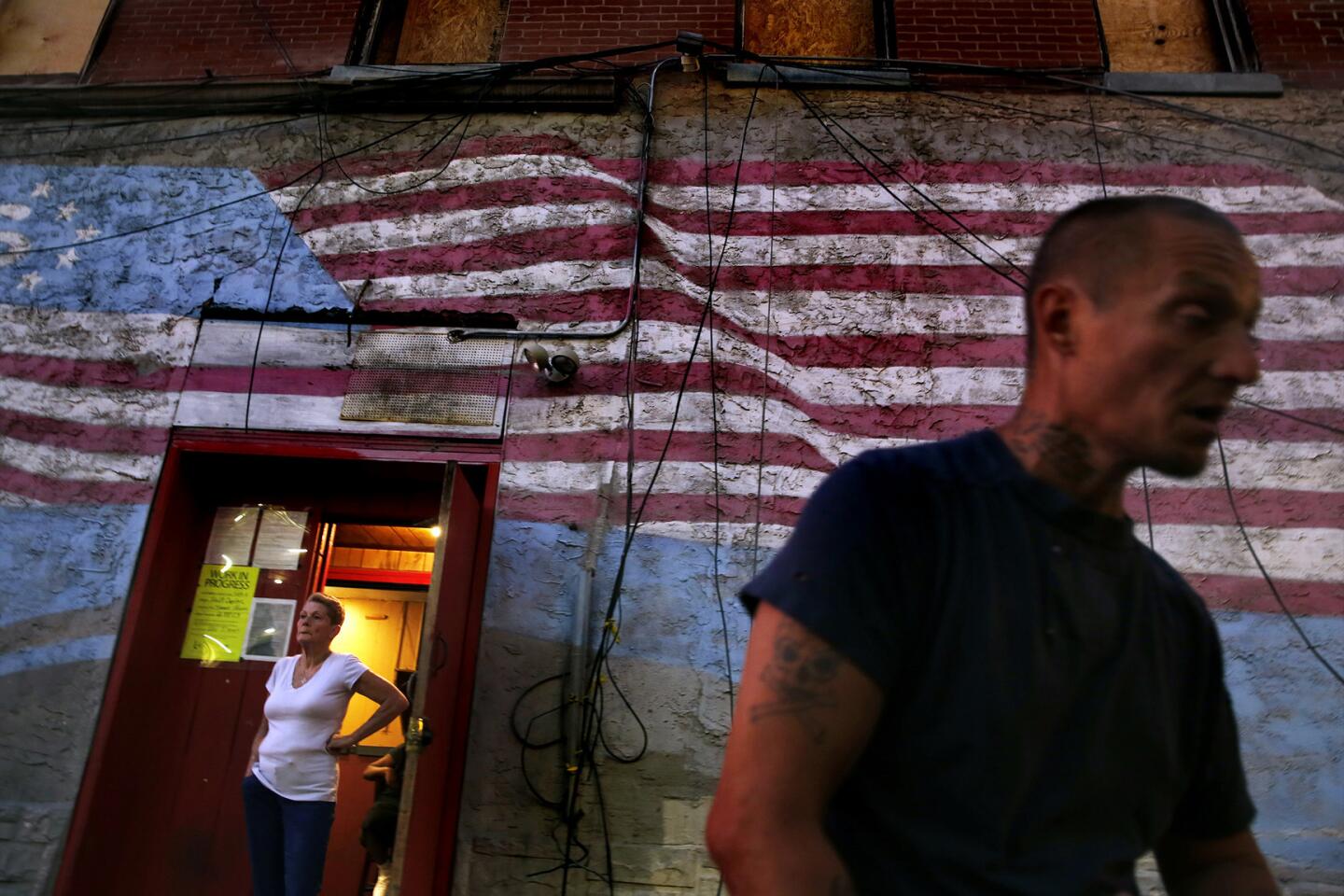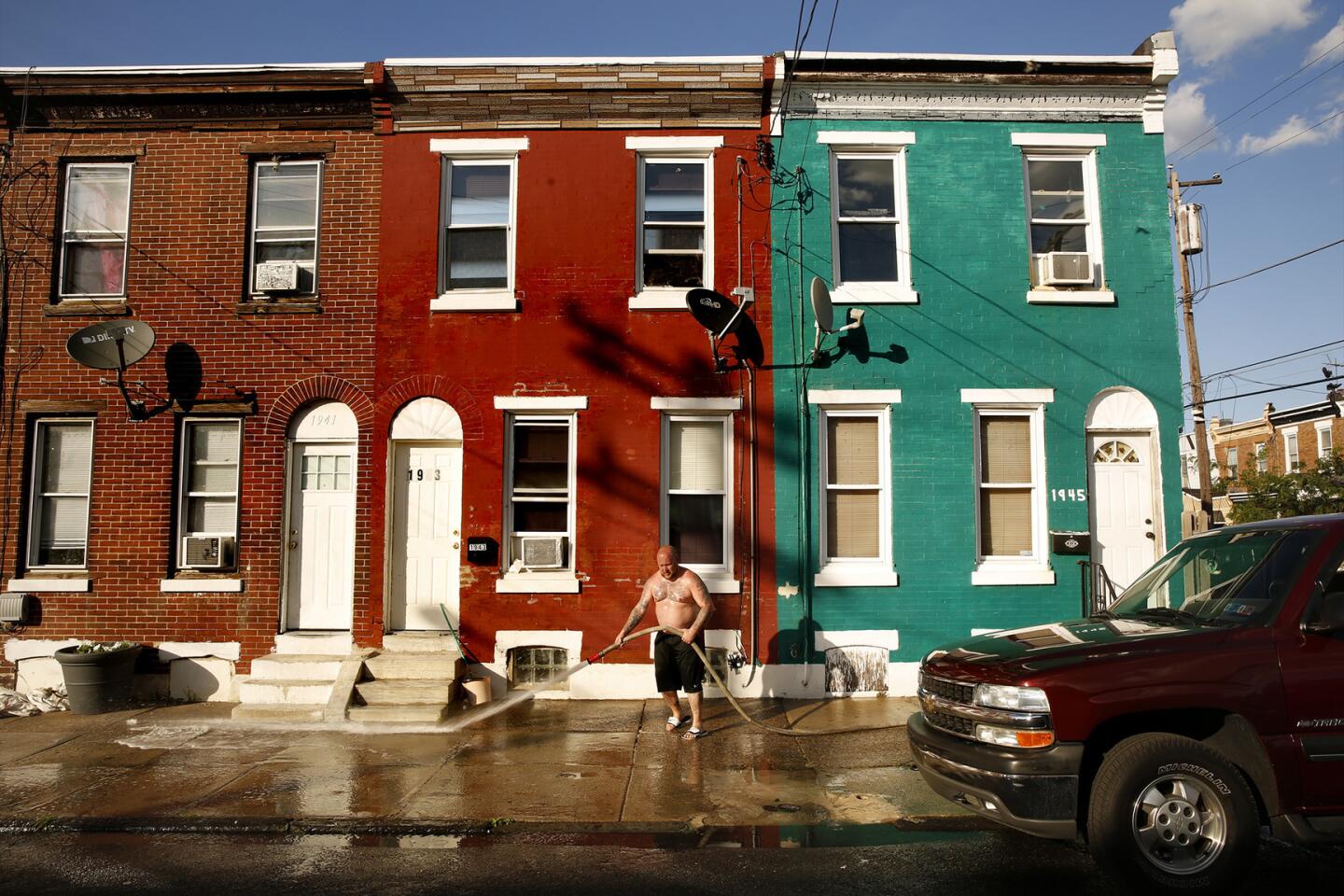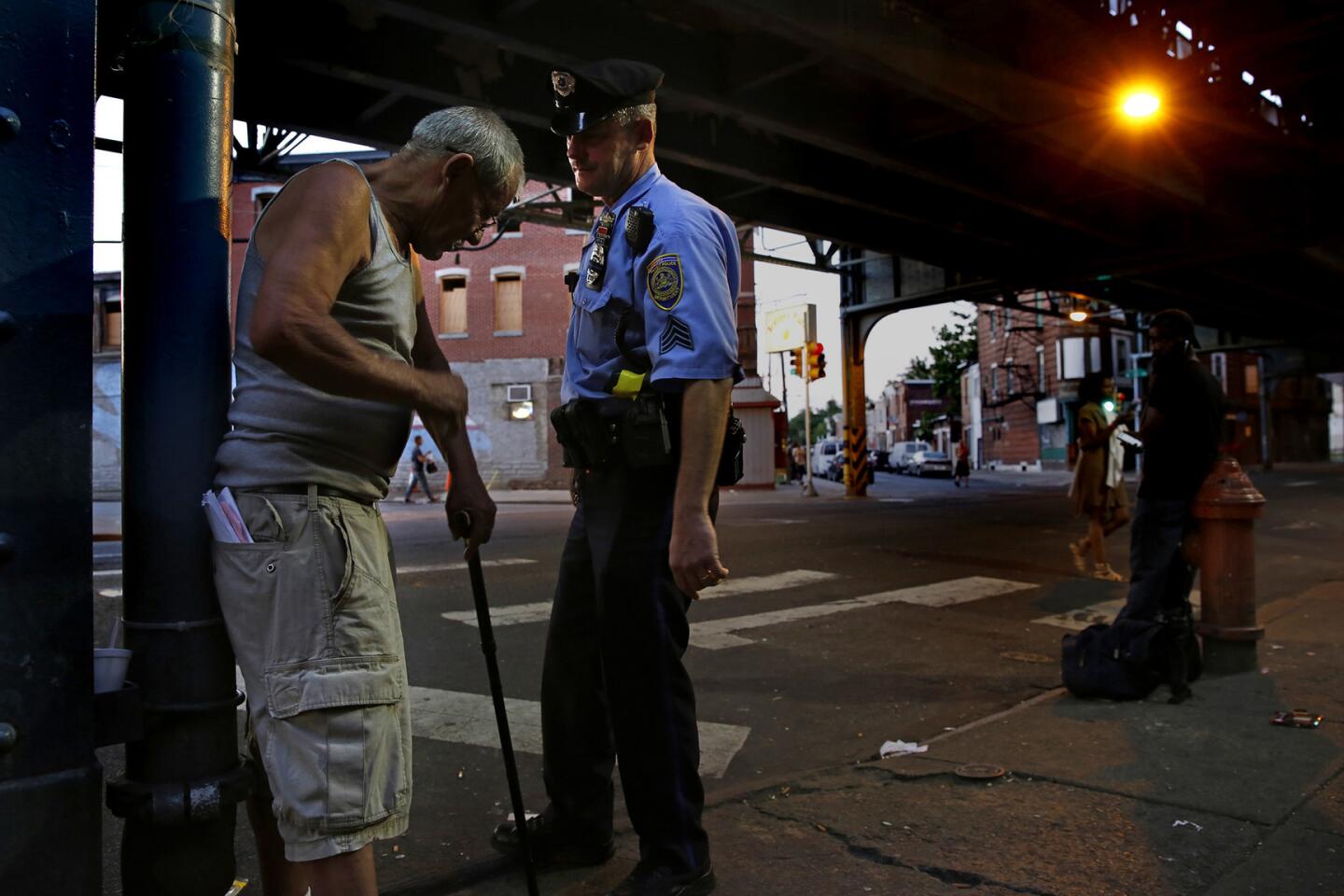Democrats aren’t the only tourists flocking to Philadelphia. So are heroin addicts
- Share via
Reporting from Philadelphia — As Democrats from across the country flock to Philadelphia for their national convention, they won’t be the only tourists in town.
Hundreds of heroin addicts from other states have washed up in Philadelphia, law enforcement officials say, drawn to a city that has become a major distribution hub for inexpensive, high-grade heroin produced by Mexico’s Sinaloa cartel.
Philadelphia is a “mecca” for out-of-town addicts, said Justin Smith, 32, an addict who arrived six years ago from Ocean City, Md., and now sleeps on a stained mattress in a dank roadway tunnel in Kensington in north Philadelphia.
“People come in from all over to get their stuff here,” agreed Dave Parke, a transit police sergeant on the elevated train line that runs along a part of Kensington that cops call the Badlands.
See the most-read stories this hour »
Veteran narcotics agents describe the neighborhood, four miles from the Liberty Bell and about seven from the Wells Fargo Center where Democrats will convene Monday, as among the most flagrant open-air drug markets on the East Coast.
“The purity is the best on the East Coast, and it’s easily accessible,” said Patrick Trainor, spokesman for the Drug Enforcement Agency in Philadelphia. “It definitely draws people.”
Last month, DEA agents here seized street heroin that was up to 92% pure. That’s twice the potency of dope seized 10 years ago, Trainor said.
Heroin use has doubled across the country since 2010, according to the DEA, part of an epidemic of opioid abuse that began in the 1990s, when doctors began prescribing higher doses of powerful painkillers.
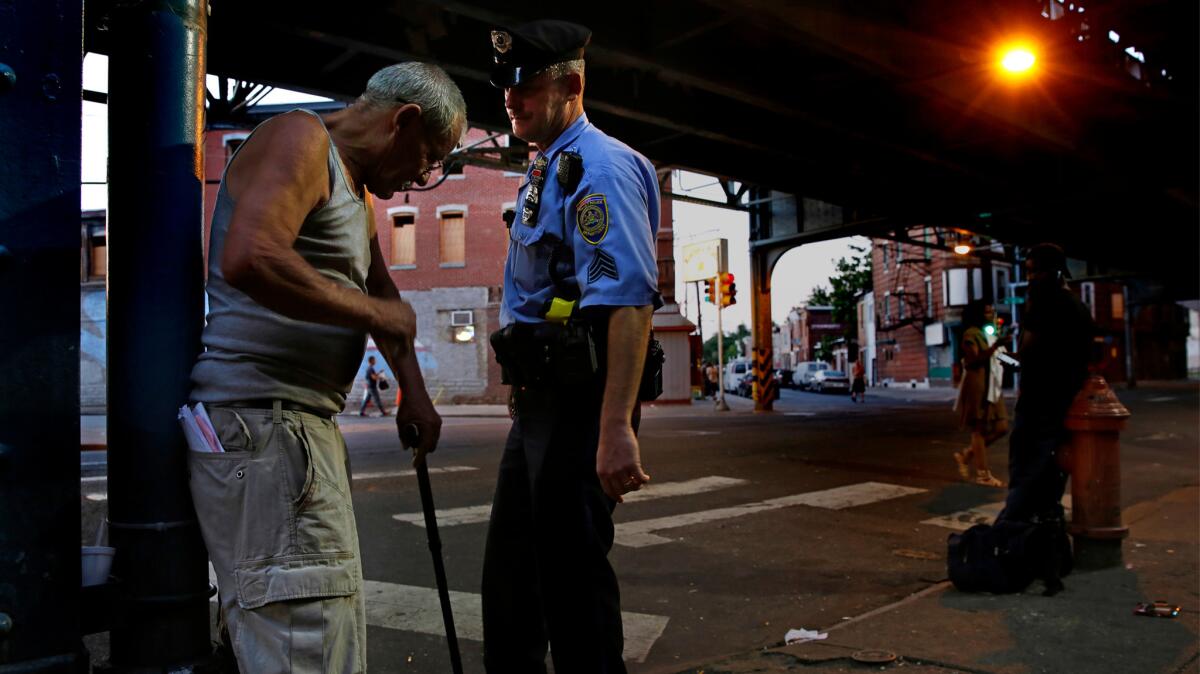
More than 4 million Americans got hooked, and when authorities began cracking down on doctors issuing too many pills, about 400,000 people turned to heroin instead, according to a 2014 report by the U.S. Department of Health and Human Services.
Most is produced and processed on farms in the rugged Sierra Madre mountains in northwest Mexico and is smuggled north across the border in trucks hauling goods, experts say.
The city became a critical stop on the delivery route for a simple reason: If you draw a circle around major heroin markets in the Mid-Atlantic region, Philadelphia sits in the middle.
Moreover, Interstate 95, the major East Coast north-south artery, skirts the Badlands. That makes it easy for drug runners to drop off supplies for local street sales and distribution to other cities and towns.
Twenty years ago, most heroin sold along the Eastern Seaboard came from traditional suppliers like Afghanistan, Myanmar, Laos and Thailand.
Then Mexican cartels, sensing a new market, began pushing a cheaper, purer narcotic that quickly grew popular in Philadelphia, New York and Baltimore. By 2014, nearly 80 % of the heroin seized in Philadelphia was made in Mexico.
Overdose deaths have risen along with the expanding pipeline and increased purity.
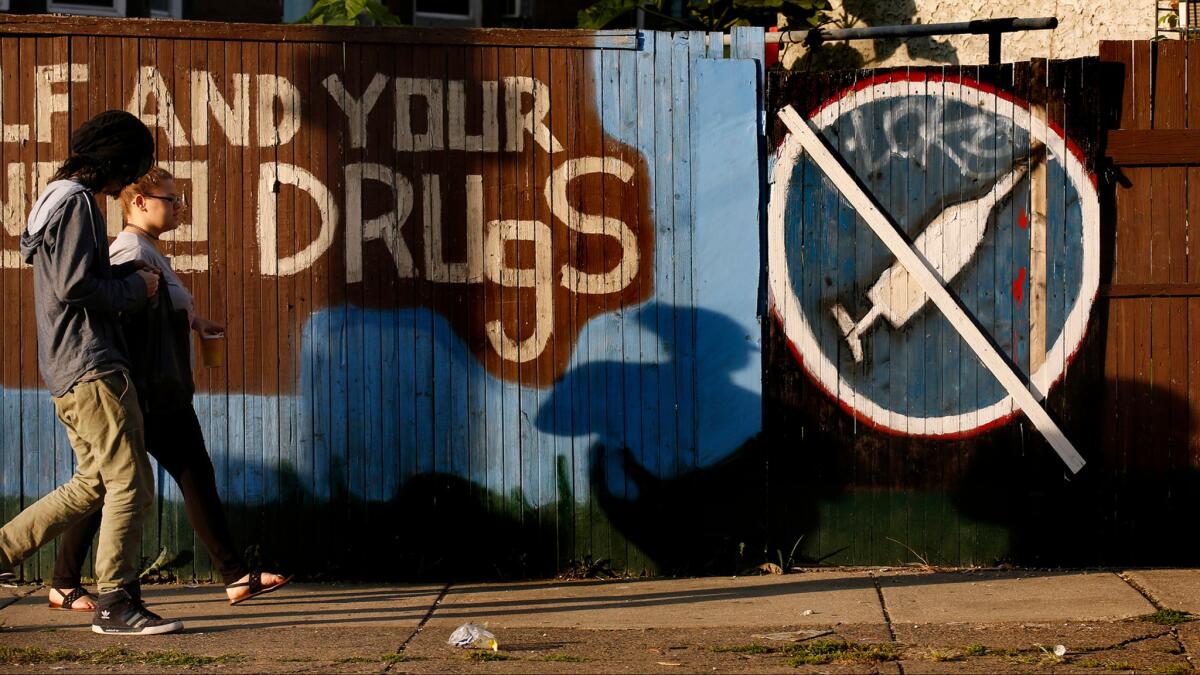
The per capita rate of overdose deaths in Philadelphia — 45 for every 100,000 people — is three times higher than in Los Angeles or Chicago, according to the Centers for Disease Control and Prevention.
Last year saw 720 drug overdose deaths in Philadelphia, up 10% from the year before; about one in four involved heroin.
Experts blame many of the fatalities on heroin laced with fentanyl, a powerful painkiller. Dealers cut the drug into heroin for a stronger high, but the mix can be fatal in tiny doses.
Part of what brings addicts from out of state is the perverse logic that where there are overdoses, there must be potent dope.
“It is like this because people come from other places,” said Danny Hinkie, a 44-year-old heroin addict, standing in front of Bentley’s Place, a bar where scenes for the 2006 movie “Rocky Balboa” were shot.
Sylvester Stallone’s character in the original 1976 “Rocky” film lived a few blocks away. “It used to be a good neighborhood,” said Hinkie, shirtless and holding a paper towel to his head to sop up blood from a gash he got falling on a step.

With the Democratic convention coming to town, Hinkie found part-time work cleaning carpets at local hotels and is using his wages to feed his drug habit. He doesn’t think the convention will change his situation much. “They ain’t gonna do nothing for us,” he said.
At sunrise on a recent Monday, 23-year-old David Jaje was still awake in the Badlands. He had spent a long night searching behind row houses for aluminum ladders he could sell to a scrap dealer.
He got a few extra bucks from a couple from Michigan as a tip for helping them find some potent heroin that they planned to drive back home and sell.
But soon he saw other addicts running down the street. A dealer at a nearby intersection was giving out free samples from a new load of heroin nicknamed Zombie.
Eager to try, dozens of people crowded at a stoop and were herded into a line by corner boys.
After he got his packet, Jaje said he melted the powder in a spoon using a cigarette lighter. He was afraid it might be laced with fentanyl.
“It mixed up dark,” he said, a sign to him that the heroin wasn’t adulterated. He quickly injected it and nodded off.
A few blocks away, off Kensington Avenue, Dave Adcox, a burly stay-at-home dad with a skull tattoo on his chest, washed down the sidewalk in front of his house. Using a wrench, he had connected a hose to the corner fire hydrant.
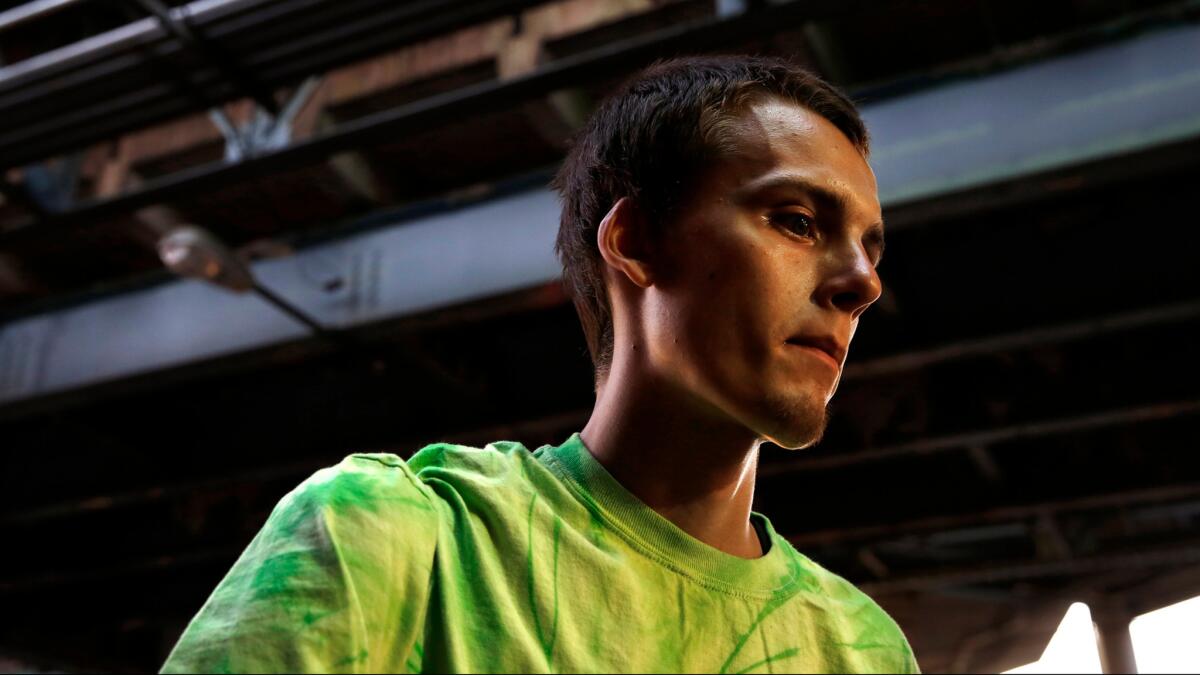
Adcox, 40, grew up in the Badlands and hates that he finds drug needles by his yard. He sometimes grabs a baseball bat when he spots a car with out-of-state plates on his street; he tells the driver firmly to buy drugs somewhere else.
“When they come here, most of them never leave,” he said. “They get so strung out … and they just stay here.”
Several recovery centers and churches along Kensington Avenue serve meals to homeless people and try to help addicts who want to get clean. A local community organization works to landscape vacant lots and improve abandoned buildings.
Back in the tunnel, Smith says he became addicted to pain pills after a car accident nine years ago, when he had a good job as a machinist making airplane parts.
But pain pills cost $80 on the black market and he soon switched to heroin, which is cheaper. He says he was clean for three years but went back to heroin last year.
Not only are the drugs addictive, but the lifestyle is addictive.
— Christina Gambrill, 31
His girlfriend, Christina Gambrill, insists there’s a strange appeal to hustling on the street.
“Not only are the drugs addictive, but the lifestyle is addictive,” she said as delivery trucks rumbled into the humid tunnel, the air heavy with sweat and stale urine. “It is the chaos, the confusion, the excitement.”
Gambrill hasn’t followed the presidential campaign or preparations for the Democratic convention.
“I can’t worry about America when I can’t even worry about [living under] this bridge,” Gambrill said.
Pushing himself off the mattress, Smith said he planned to check himself into a detox program at the end of the day. But first, he needed to score.
Twitter: @ByBrianBennett
ALSO
Florida police shoot caretaker who says he was trying to help autistic patient
Similar crime, different punishment: Campus rape echoes Brock Turner case
Texas police chief apologizes to black woman for officer’s ‘disturbing’ comments
More to Read
Get the L.A. Times Politics newsletter
Deeply reported insights into legislation, politics and policy from Sacramento, Washington and beyond. In your inbox three times per week.
You may occasionally receive promotional content from the Los Angeles Times.

